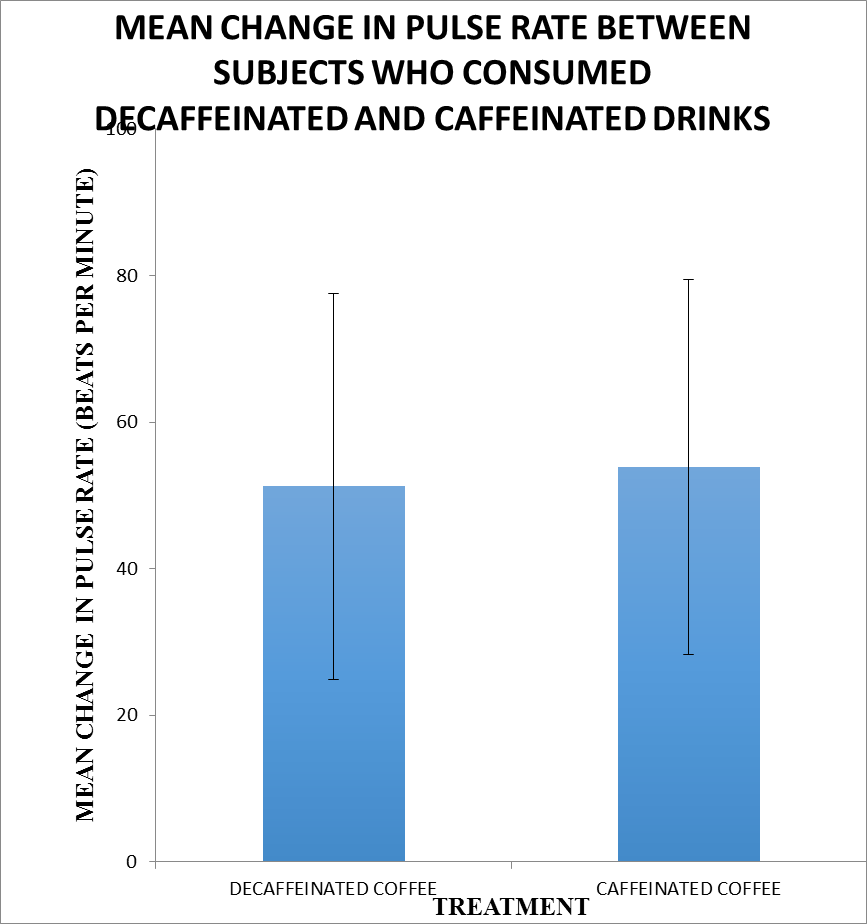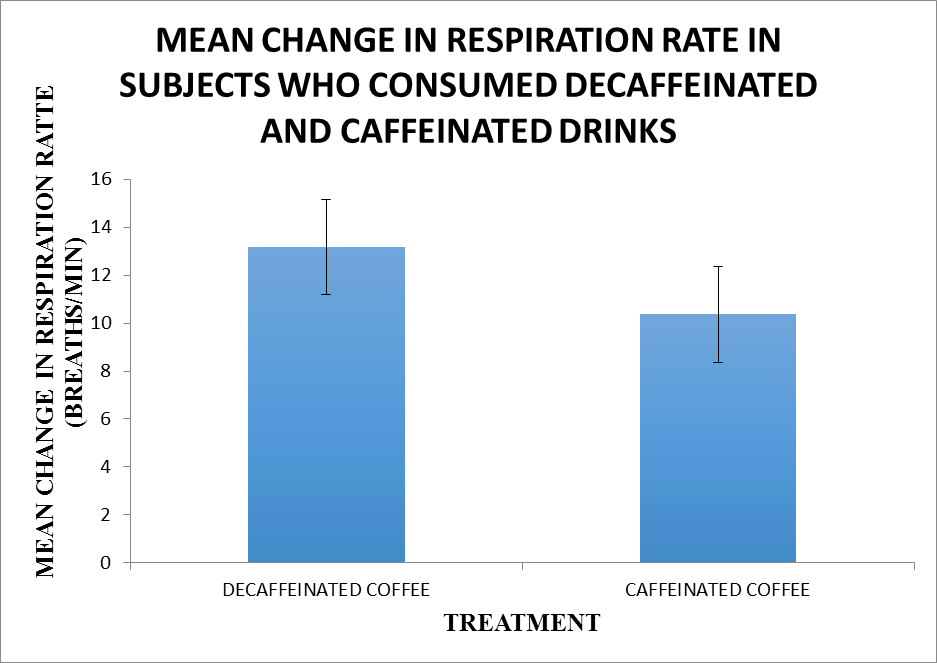Summary
Caffeine is a commonly used drug that is present in many beverages such as coffee, tea, and energy drinks (Cappelletti et al. 2015). The wide availability of caffeinated products has triggered immense research on their effects on wellbeing, cognitive rejoinders, and bodily performance (Seifert et al. 2011; Pesta et al. 2013; Trexler et al. 2015). For example, one study has shown that the intake of substances containing caffeine changes the functioning of the cardiovascular system, with positive inotropic and chronotropic consequences (Cappelletti et al. 2015). Caffeine also possesses locomotor-action-stimulating and anxiogenic effects, which affect the central nervous system. Even though these effects are generally beneficial, excessive caffeine intake leads to dependence and intoxication, which can have life-threatening implications. On the other hand, a different study has demonstrated that caffeine enhances the performance of trained athletes when taken in regulated doses (Goldstein et al. 2010).
The bodily effect of caffeine, known by its chemical name of 1,3,7-trimethylxanthine, is thought to be related to the production of energy in the form of adenosine triphosphate (ATP). ATP is necessary for the operation of life-sustaining reactions and is produced through cellular respiration, which may be aerobic or anaerobic. Exercise forces the aerobic energy system to produce ATP, which necessitates extra oxygen to be conveyed to the muscles. As a result, the heart works faster to propel more oxygen-containing blood to the tissues, which increases the heart rate. Physical activity also raises the ventilation rate of the lungs to satisfy the elevated oxygen demands and eliminate the carbon dioxide gas produced from cellular respiration. These processes lead to an increased respiration rate.
The aim of this experiment is to determine the effect of caffeine on the pulse and respiratory rates. Changes in pulse and respiratory rates from rest to post-exercise will be measured as a marker of overall aerobic performance. These findings will determine whether caffeine provides benefits in physical exertion. The study will use a physical test that is a modification of the Harvard step-up test, a reliable test that has been used to study physical fitness, oxygen intake, and cardiac efficacy (Leung et al. 2013; Kesavachandra & Reddy 2015; Bennett et al. 2015). This study will answer the question, “What is the effect of caffeine on respiratory and pulse rates?” It is predicted that caffeine intake will augment pulse and respiratory rates. The first null hypothesis is that caffeine does not have a substantial impact on the respiration rate. The second null hypothesis is that caffeine does not have a substantial effect on the pulse rate.
Methods
Experimental Design
The hypotheses were tested using two test drinks in two experimental groups: A and B. The subjects in group A were given a caffeinated drink while subjects in group B were given a decaffeinated drink. The subjects then performed aerobic exercises based on the Harvard step-up test. The procedure was replicated 146 times in total: 77 times in the caffeinated group and 69 times in the decaffeinated group.
Procedure
The subjects of the study were required to be regular consumers of a minimum of one cup of caffeinated drinks such as tea, coffee, cola, and hot chocolate or red bull every day. The subjects were also expected to have normal lung function free of asthma or any infection of the upper respiratory tract and not have any health condition that contraindicated strenuous physical exertion. On the experiment day, the subjects ate normal food within two hours prior to the commencement of the study but drank only water. Subjects in group A were each given 100mL of black coffee made from 6 grams of regular coffee beans, and subjects in group B were each given 100 mL of black coffee made from 6 grams of decaffeinated coffee beans. Each subject was given the equivalent of 180mg of brewed coffee. A one-hour break was taken before proceeding with the subsequent tests.
The subjects then undertook incremental step-up exercises with the aid of a metronome to moderate the velocity of the activity. Before beginning the exercises, the resting pulse of each subject was taken at the radial or carotid artery for half a minute, and the resting respiratory rate of each subject was measured by putting a hand on each subject’s back and adding up the number of times it rose and fell within half a minute. Both numbers were doubled to find the number of beats per minute as well as the number of breaths per minute. All values were recorded in a table. Thereafter, the step-up test was performed by changing the intensity of the exercise for 4 minutes. The rate of stepping increased every minute from 20 steps per minute to 24, 28, and 32 steps per minute. The subjects’ final pulse and respiration rates were measured when the activity was stopped. The changes in pulse rate and respiration rate were computed and transferred to the database on the class computer.
Two statistical tests (Student’s t-tests) were done to test differences in the mean change in pulse rate between subjects who consumed caffeinated coffee and those who consumed decaffeinated coffee and the mean change in respiration rate between subjects who consumed caffeinated coffee and those who consumed decaffeinated coffee. Both tests were done at a significance level of P=0.05.
Results
The mean differences in the pulse rates and respiration rates were recorded and used to plot bar graphs of the two treatment groups as shown below in Figures 1 and 2. The mean change in pulse rate of the subjects who drank caffeinated coffee was slightly higher than that of those who drank decaffeinated coffee. The mean change in respiration rate was slightly higher in the subjects who drank decaffeinated coffee than of those who drank caffeinated coffee.


There was no significant difference in the mean change in pulse rate between subjects who consumed caffeinated coffee and those who consumed decaffeinated coffee (t= -0.62, d.f.= 144, p> 0.05). There was no significant difference in the mean change in respiration rate between subjects who consumed caffeinated coffee and those who consumed decaffeinated coffee (t= 1.70, d.f.= 127, p> 0.05).
Discussion
It was observed that caffeine intake did not have a substantial effect on the pulse rate and respiratory rate. These findings corroborated the null hypotheses that caffeine did not have a significant effect on the respiratory rate and pulse rate. These findings support those reported by several scientists (Ivy et al. 2009; Goldstein et al. 2010) and could be attributed to the chemical nature and mode of action of caffeine. Caffeine is quickly absorbed into the gastrointestinal tract and metabolized by liver enzymes into three metabolites: paraxanthine, theophylline, and theobromine. The peak concentrations of these metabolites are attained in the bloodstream one hour following the intake of caffeine, which explains why the physical activity began an hour after the administration of caffeine in this study.
Caffeine is thought to influence physical activity in various ways. However, the most significant way is through its interaction with adenosine receptors. Caffeine competes with adenosine for its receptors due to its ability to traverse the muscular and nervous membranes. Consequently, its exercise-enhancing effects tend to be more nervous than muscular, which may explain why no substantial differences in respiratory and pulse rates were noted in this study. Therefore, the central nervous system was also implicated in caffeine mechanisms. It has also been reported that caffeine impacts the utilization of substrates during exercise by reducing the dependence on glycogen utilization and promoting fatty acid oxidation (Hodgson, Randell, & Jeukendrup 2013). High doses of caffeine of 9mg per kilogram have been implicated in reduced ventilation as shown by reduced VO2max during physical exertion (Ivy et al. 2009).
The physical form of the caffeine consumed also influences its effects on the body. It has been reported that caffeine is more effective when taken in an anhydrous state (Cappelletti et al. 2015). In the study, caffeine was administered as coffee, which could partially explain the results. The dosage of caffeine in the study may also be responsible for the observed effects, as the effectiveness of caffeine is highest in low to moderate doses of 3 to 6mg/kg as opposed to high doses of 9mg/kg. In this study, the subjects received 180mg of coffee. However, the exact dosage in mg/kg is unknown because the weights of the subjects were not recorded.
Therefore, this experiment concluded that caffeine did not have a significant effect on respiratory or pulse rates. Future studies could look into the wide-ranging physiological effects of caffeine supplementation and the effects of various caffeine dosages on exercise endurance.
References
Bennett, H., Parfitt, G., Davison, K. & Eston, R 2015, “Validity of submaximal step tests to estimate maximal oxygen uptake in healthy adults,” Sports Medicine, vol. 46, no. 5, pp. 737-750.
Cappelletti, S., Daria, P., Sani, G. & Aromatario, M 2015, “Caffeine: cognitive and physical performance enhancer or psychoactive drug?” Current Neuropharmacology, vol.13, no.1, pp. 71-88.
Goldstein, E. R., Ziegenfuss, T., Kalman, D., Kreider, R., Campbell, B., Wilborn, C., Taylor, L., Willoughby, D., Stout, J., Graves, B. S., Wildman, R., Ivy, J. L., Spano, M., Smith, A. E., & Antonio, J 2010, “International society of sports nutrition position stand: caffeine and performance,” Journal of the International Society of Sports Nutrition vol.7, no.5, pp. 1-15.
Hodgson, A. B., Randell, R. K. & Jeukendrup, A. E 2013, “The effect of green tea extract on fat oxidation at rest and during exercise: evidence of efficacy and proposed mechanisms,” Advances in Nutrition: An International Review Journal, vol.4, no. 2, pp.129-140.
Ivy, J. L., Kammer, L., Ding, Z., Wang, B., Bernard, J. R., Liao, Y. H. & Hwang, J 2009, “Improved cycling time-trial performance after ingestion of a caffeine energy drink,” International Journal of Sports Nutrition, vol.19, no. 1, pp. 61-78.
Kesavachandra, G. & Reddy, K.S 2015, “A study to evaluate the cardiac efficiency by Harvard step test in different age groups,” International Journal of Contemporary Medicine, vol.3, no.2, pp.53-57.
Leung, T. K., Kuo, C. H., Lee, C. M., Kan, N.W. & Hou, C. W 2013, “Physiological effects of bioceramic material: Harvard step, resting metabolic rate and treadmill running assessments,” Chinese Journal of Physiology, vol. 56, no.6, pp. 334-340.
Pesta, D. H., Angadi, S. S., Burtscher, M. & Roberts, C. K., 2013, “The effects of caffeine, nicotine, ethanol, and tetrahydrocannabinol on exercise performance,” Nutrition & Metabolism, vol. 10, no. 1, p.1.
Seifert, S. M., Schaechter, J. L., Hershorin, E. R. & Lipshultz, S. E 2011, “Health effects of energy drinks on children, adolescents, and young adults,” Pediatrics, vol. 127, no.3, pp. 511-528.
Trexler, E. T., Smith-Ryan, A. E., Roelofs, E. J., Hirsch, K. R. & Mock, M. G 2015, “Effects of coffee and caffeine anhydrous on strength and sprint performance,” European Journal of Sport Science, vol. 22, pp.1-9.